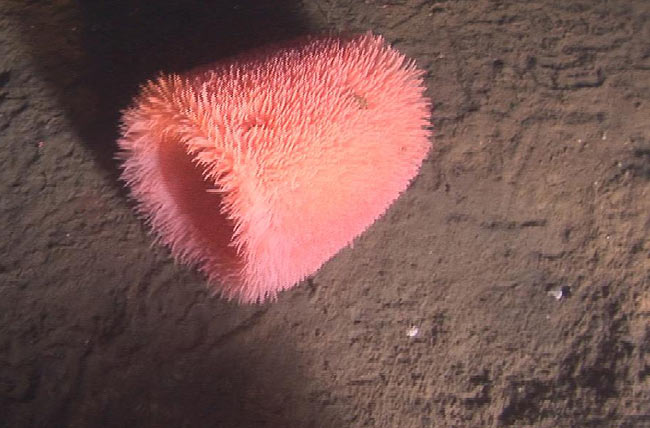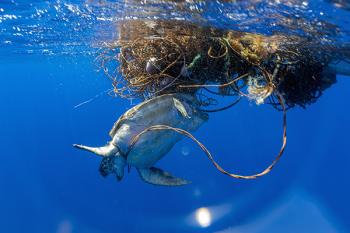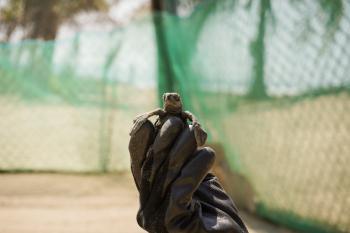Most of us have seen sea anemones on the rocky shores. But, the pom-pom anemone (Liponema brevicornis) lives unattached on muddy seafloors at depths of 330-3,300 feet. It feeds on food particles drifting by. They have been found near hydrothermal vents and cold seeps as well as near whale carcasses.
The pom-pom anemone can be puffed up like in the top picture, or can flatten out more like a rolled tube. Scientists have seen the anemones in this shape being blown by currents on the sea floor like a tumbleweed. Another common name for this animal is the tumbleweed anemone. (But, we prefer Pom-Pom).
HUZZAH!
photo source: http://www.gbif.org/species/116785650#images
Most of us have seen sea anemones on the rocky shores. But, the pom-pom anemone (Liponema brevicornis) lives unattached on muddy seafloors at depths of 330-3,300 feet. It feeds on food particles drifting by. They have been found near hydrothermal vents and cold seeps as well as near whale carcasses.
The pom-pom anemone can be puffed up like in the top picture, or can flatten out more like a rolled tube. Scientists have seen the anemones in this shape being blown by currents on the sea floor like a tumbleweed. Another common name for this animal is the tumbleweed anemone. (But, we prefer Pom-Pom).
HUZZAH!

Photo source: http://actiniaria.com/liponema_brevicornis.php
Scientists at the Monterey Bay Aquarium Research Institute observed sea spiders (pycnogonids) in the deep sea sucking fluids out of the tentacles of pom-pom anemones. And they also saw sea spiders pulling off anemone tentacles and carrying them away.
Read more about pom-pom anemones and sea spiders
View videos about anemones on Shape of Life:
Cnidarians: Anemone Swims Away From Sea Star
Cnidarians: Life on the Move















